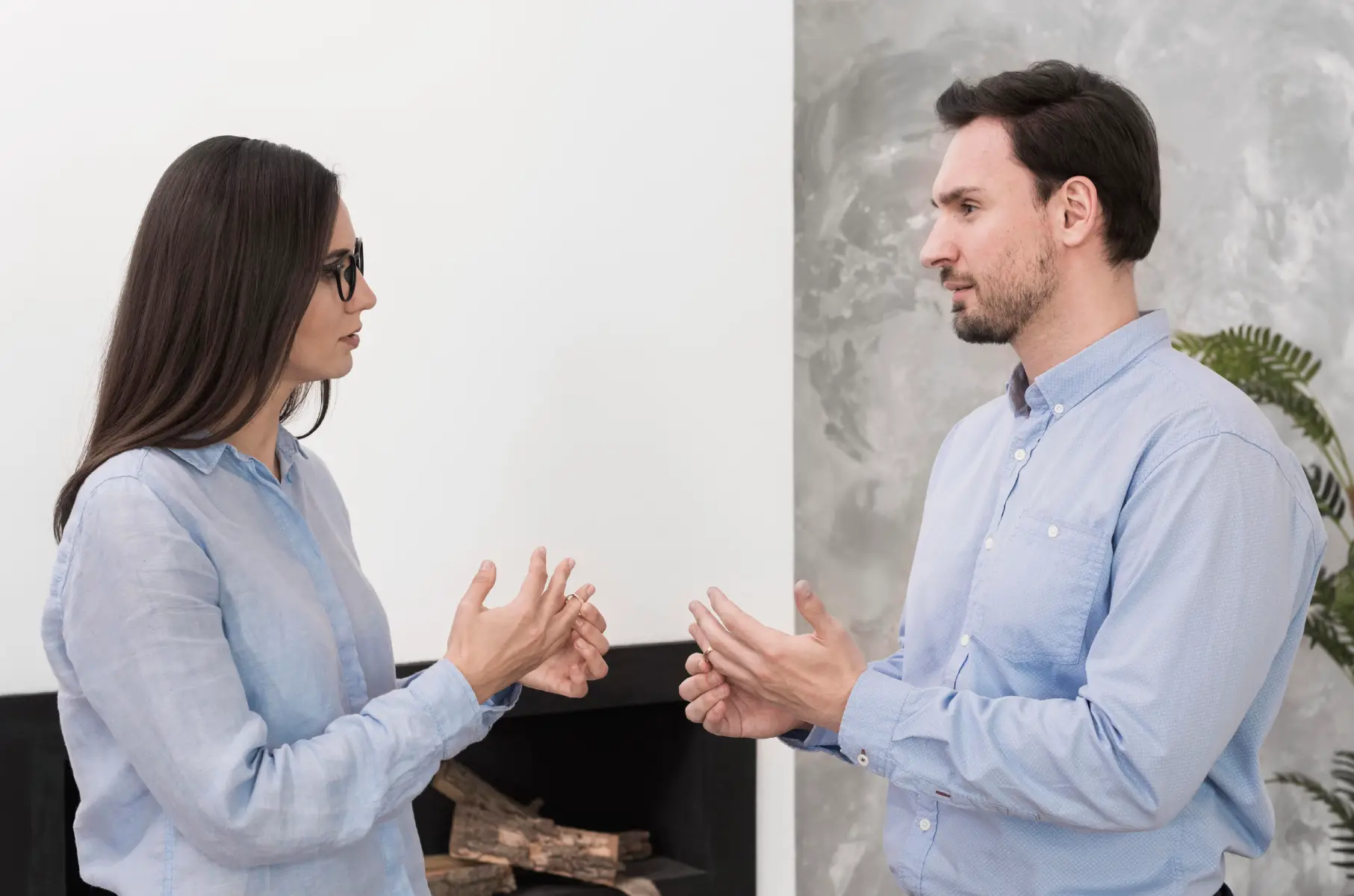Attachment styles play a profound role in our lives, shaping the way we relate to others, form relationships, and even view ourselves. Originating from childhood experiences, these patterns of attachment often influence how we behave in adult relationships, from romantic partnerships to friendships and even professional interactions.
Understanding your attachment style is a vital first step toward building healthier and more fulfilling relationships. With support, such as therapy, it is possible to unlearn unhealthy patterns and cultivate secure, connected relationships.
In this article, we’ll explore the four main attachment styles (secure, anxious, avoidant, and disorganised), their impact on relationships, and how therapy can help individuals address and heal attachment-related challenges.
What Are Attachment Styles?
Attachment styles are psychological frameworks that describe how individuals connect and bond emotionally with others. First introduced through the work of John Bowlby, a British psychologist and psychiatrist, attachment theory focuses on how early relationships between children and their caregivers shape their emotional and relational development.
Early caregiving experiences—whether nurturing and consistent, or neglectful and erratic—play a critical role in forming the attachment style a person carries into adulthood. These styles then influence how individuals interact in relationships, particularly during moments of conflict, stress, or intimacy.
The Four Main Attachment Styles:
- Secure Attachment
- Anxious Attachment
- Avoidant Attachment
- Disorganised Attachment
Each of these attachment styles is linked to specific patterns of thought, behaviour, and emotional regulation in relationships. Let’s dive deeper into each one.
1. Secure Attachment
Secure attachment is characterised by feelings of trust, confidence, and emotional safety in relationships. People with a secure attachment style are comfortable expressing their needs, seeking support when necessary, and giving the same support to others.
Key Traits of Secure Attachment:
- Comfort in both closeness and independence.
- Confidence in a partner’s availability and reliability.
- Strong communication skills and emotional regulation.
- Ability to handle conflict constructively while maintaining trust.
Childhood Origins:
Children who develop a secure attachment style are typically raised in environments where their caregivers are responsive, consistent, and emotionally attuned to their needs. This fosters a sense of safety and encourages the child to explore their surroundings while trusting that their caregiver will be there for them.
Secure Attachment in Adult Relationships:
In adulthood, secure individuals tend to have healthy, balanced relationships. They’re comfortable expressing affection, managing conflicts, and supporting their partners without being overly dependent or distant.
2. Anxious Attachment
Anxious attachment (also referred to as preoccupied attachment) is rooted in a deep fear of abandonment and rejection. People with this attachment style often require frequent reassurance from their partners about their love and commitment, which can lead to clingy or overly dependent behaviours.
Key Traits of Anxious Attachment:
- Difficulty trusting that a partner truly cares.
- Fear of rejection and intense emotional highs or lows.
- A constant need for reassurance and validation.
- Tendency to overthink potential threats to the relationship.
Childhood Origins:
This attachment style typically develops when caregivers are inconsistent in their responsiveness—alternating between being nurturing and emotionally unavailable. As a result, the child learns to doubt whether their needs will be consistently met.
Anxious Attachment in Adult Relationships:
Adults with anxious attachment may struggle with jealousy, insecurity, or constant worry about their partner’s commitment. This often leads to behaviours like seeking constant approval or overreacting to perceived signs of disinterest, which can put strain on the relationship.
3. Avoidant Attachment
Avoidant attachment (also known as dismissive attachment) is characterised by an emotional distance or reluctance to depend on others. People with this attachment style often prioritise self-reliance and may avoid emotional intimacy to protect themselves from rejection or vulnerability.
Key Traits of Avoidant Attachment:
- Discomfort with closeness or emotional intimacy.
- Tendency to suppress emotions or avoid discussing feelings.
- Preference for independence and self-sufficiency over interdependence.
- Avoidance of relationships or a “fear of commitment.”
Childhood Origins:
Avoidant attachment typically arises when a caregiver is emotionally distant, dismissive, or neglectful. These children learn to suppress their emotional needs and rely on themselves instead of seeking comfort from others.
Avoidant Attachment in Adult Relationships:
Adults with an avoidant attachment style may struggle with expressing emotions or maintaining emotional closeness. They might withdraw in the face of intimacy or conflict, making it difficult to form deep and lasting connections.
4. Disorganised Attachment
Disorganised attachment (sometimes called fearful-avoidant attachment) combines traits of both anxious and avoidant attachment styles. People with this attachment style often crave connection but fear it simultaneously, leading to unpredictable or contradictory relationship behaviours.
Key Traits of Disorganised Attachment:
- Mixed feelings about relationships, such as craving closeness but fearing it.
- Difficulty trusting others and struggling with emotional regulation.
- Instability in relationships, with drastic shifts between pushing people away and pulling them closer.
- A heightened response to rejection or perceived betrayal.
Childhood Origins:
Disorganised attachment often develops in response to trauma, neglect, or abuse in childhood. Children in these environments may be both comforted and frightened by their caregivers, causing confusion and fear in their ability to form secure relationships.
Disorganised Attachment in Adult Relationships:
Adults with disorganised attachment often experience a push-and-pull dynamic in relationships. They may desire intimacy but fear vulnerability, leading to inconsistency, emotional turmoil, or conflict in their connections.
How Attachment Styles Shape Relationships
Attachment styles profoundly impact how adults approach relationships, affecting:
- Communication: Secure individuals tend to communicate openly, while those with anxious or avoidant styles may struggle with expressing their needs or handling conflict effectively.
- Emotional Regulation: Securely attached individuals manage emotions constructively, but those with insecure attachment styles often experience emotional highs and lows that can strain relationships.
- Trust and Intimacy: Trust is easier for securely attached individuals, while anxious or avoidant attachment can lead to jealousy, fear of abandonment, or emotional withdrawal.
Understanding your attachment style—and how it interacts with your partner’s—can provide invaluable insights into your relationship patterns, helping you build greater awareness and emotional connection.
Can Attachment Styles Be Changed?
The good news is that attachment styles are not fixed. While they are rooted in childhood experiences, they can evolve over time, particularly through self-awareness and intentional work in therapy or personal growth.
How Therapy Can Help Address Attachment Styles
Therapy can play a significant role in helping individuals with insecure attachment styles shift toward more secure, connected relationships. At Pinnacle Therapy, we offer professional counselling support that focuses on uncovering and addressing the roots of attachment challenges.
Benefits of Therapy for Attachment Issues:
- Identifying Patterns: Therapists can help individuals recognise how their attachment style influences their behaviours and emotions in relationships. Gaining this self-awareness is the first step toward positive change.
- Exploring Root Causes: Understanding the childhood dynamics or past traumas that shaped your attachment style can provide clarity and healing, allowing you to address unresolved emotions.
- Building Emotional Regulation: Therapy helps individuals learn techniques to manage challenging emotions, such as jealousy, fear, or impulsive behaviours, that might stem from attachment insecurities.
- Developing Communication Skills: For those with anxious or avoidant tendencies, therapy can offer guidance for expressing needs, setting boundaries, and resolving conflict constructively.
- Enhancing Current Relationships: Couples therapy, in particular, is especially valuable for partners with mismatched attachment styles. It helps promote understanding, empathy, and strategies for bridging gaps in communication and connection.
Final Thoughts
Attachment styles are a fundamental aspect of how we navigate the world of relationships. Whether secure, anxious, avoidant, or disorganised, these patterns influence our communication, trust, and sense of intimacy with others.
At Pinnacle Therapy, we are passionate about helping individuals and couples explore their attachment styles and make meaningful changes that lead to happier, healthier relationships. Therapy isn’t just about exploring the past—it’s about creating a brighter and more connected future.
If you want to learn more about how therapy can support your journey to understanding and healing your attachment style, contact us today at www.pinnacletherapy.co.uk. Start your path toward enriching and fulfilling relationships, both with yourself and others.









